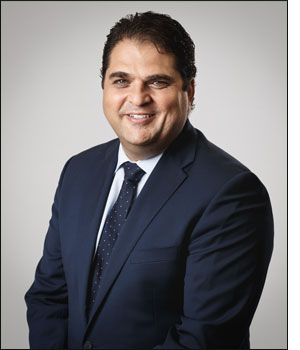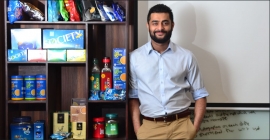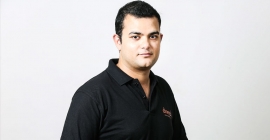‘Airports are an incredibly efficient media environment’
By Rajiv Raghunath - April 21, 2018
Robbie Dery, Group Director, oOh! Fly, the airport media arm of Australia’s oOH!, shares his thoughts on the different dimensions of airport advertising and how digital media is transforming the business

Tell us a little about oOh! Fly. When was the business set up and what are your offerings? Which markets do you cover?
oOh! Fly has been operating since 2002, building out a national, scaled digital network in 2012, focusing on targeting audiences at specific journey stages, and we have continued to evolve this offer in all airport precincts; from airport externals, terminals, airport lounges, and now inflight entertainment.
Do you see airport media business growing in Australia?
There is tremendous opportunity for growth in airport media in Australia. Technology and particularly digital media has been an enormous disrupter to media in general, as it has provided content creators new ways to distribute and reach consumers. We have seen the significant impact this has had on press, magazines and TV as examples, where readership and viewership have significantly decreased as audiences move to new digital media platforms such as YouTube, Facebook, Twitter and Instagram.
Airports don’t suffer from the same dynamics, and in fact quite the opposite is occurring. As other traditional media sees their audience fragment and their proposition become less valued, airports continue to see passengers and for us audience, consolidation and continual growth.
More flights and larger aircrafts continue to deliver more passengers worldwide which makes this location-based media highly visible and an effective way of reaching targeted audiences. This is both from a domestic and International perspective – passenger growth in Australia is forecast to double over the next 15 years, as per the Bureau of Infrastructure, Transport and Regional Economics (BITRE).
As a key part of any city’s infrastructure, and critical to economic development, airport operators in Australia continue to invest in their infrastructure to ensure they can service the growth rates.
But to deliver the commercial returns on this investment, they have realised that they must also continually improve the customer experience. High quality environments, with sophisticated retail offerings and extensive precinct developments are also attracting increased retail spends from both domestic and International travellers, in particular the highly desirable Chinese traveller.
Our multiple data sets, which map audiences against our airport media proposition, continue to prove that airports are an incredibly efficient media environment for reaching high value audiences. We are seeing more brands buying airports strategically and long term, as the unique audience reach of specific audience segments continues to grow over this time, often delivering in excess of 85% of a desired audience over a 12-months period.
What steps will ensure high consumer engagement with airport media?
In a high dwell environment such as an airport, playing ads over and over does not deliver a high engagement result. I have always taken the approach that if there is a focus on what matters for our commercial partners – customer, engagement and utility - we will deliver solid commercial results.
With this in mind, we have developed internationally recognised campaigns and media opportunities which not only deliver functional and contextual messaging, but drive engagement for our advertising partners.
We have seen direct evidence of this with our Collect & Connect TV product offer at Baggage Reclaim, as travellers await their baggage, which has an average of 12 minutes of dwell time.
Rather than have a high advertiser rotation, we lowered the advertising display by 50% and increased the amount of content to display onward journey information, local restaurant reviews, weather forecasts and ideas for what to do when in the city a passenger has arrived in.
We found that passengers were interested in the content and engaged with the screens for longer – this doubled the demand for the format and we have continued to break ground with the product with integrated partnerships with tourism bodies and with bespoke content integration.
The Qantas Lounges’ QView screens development was another great example of working with our commercial partners to really understand their pain points and what customers valued. QView integrates Flight Information along with walk to gate times, destination weather and content to engage as the primary focus – the advertising forms part of it, but providing utility for our partners subsequently drives greater engagement with the advertising. It’s a win for all parties.
From your experience what kind of brands advertise most on airport media?
With audience data providing greater insights for advertisers, we have seen a significant expansion of leading brands investing in airports across a broad range of categories.
Airports offer uniqueness in terms of a media proposition – as well as a growing, high value audience with national scale. Being an early adopter of digital has also allowed advertisers to use a mix of different creatives to tell a brand story. There isn’t another media proposition that offers such a comprehensive product offering, all within one passenger’s journey – from high impact digital display, to native content, experiential, mobile and video.
Having secured the global ad rights to Qantas Inflight infotainment systems, which are the top brands that are likely to be signing up for long-term advertising on this media?
We take over the contract 1 June and there is genuine excitement from the market about being able to tell a brand story over an extended period of time to a very targeted audience. What has been pleasing is that the level of interest has not only come from the more traditional categories such as Financial Services, Telco, Auto, Perfume and Tech but new categories such as Entertainment, Retail and Education.
Are you looking at securing similar rights on other airline flights?
We have built a strong business in Australia and are looking at other opportunities throughout the Asia Pac region, where we can deliver a unique audience proposition to advertisers and commercial partners.

Stay on top of OOH media trends








